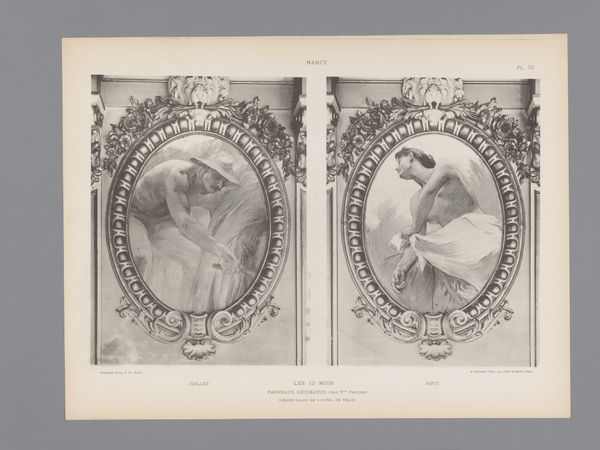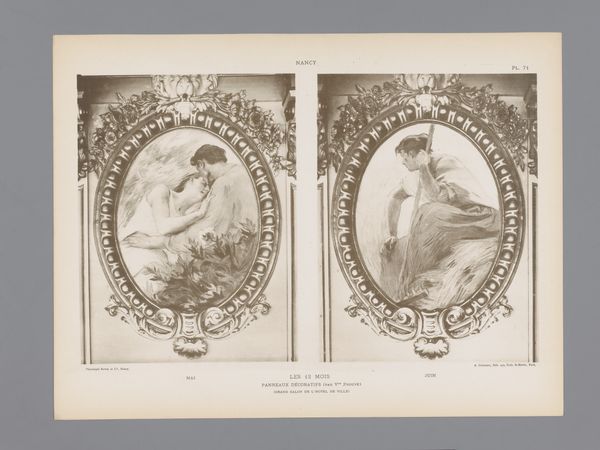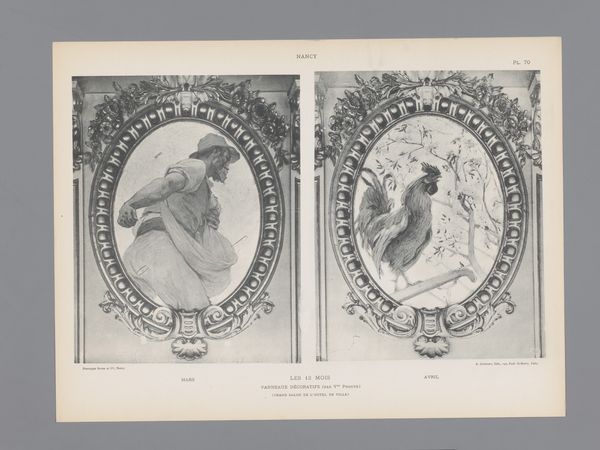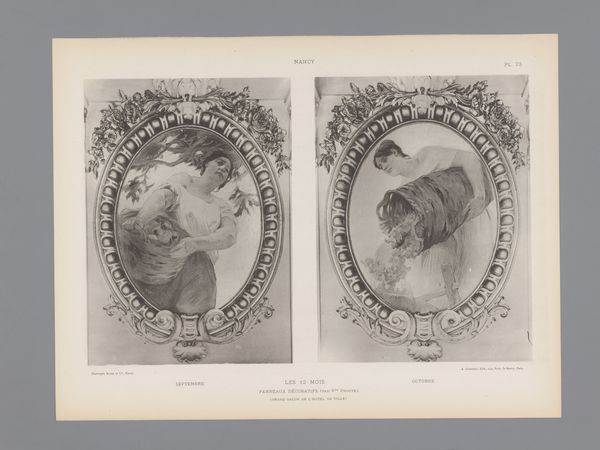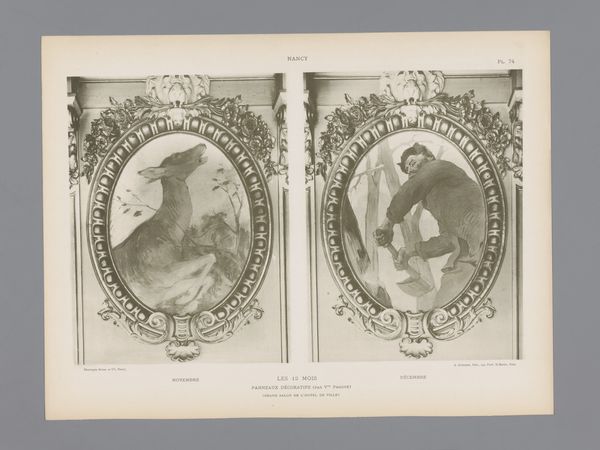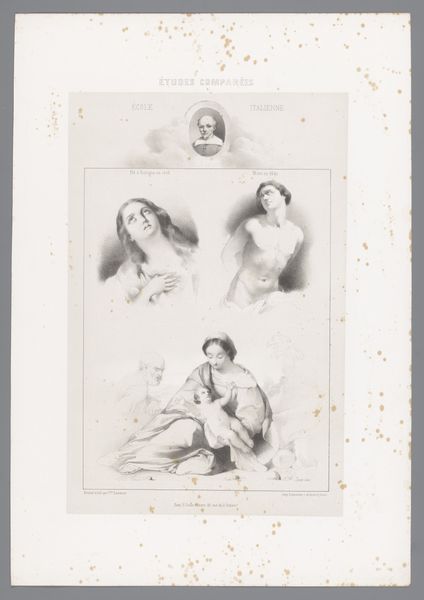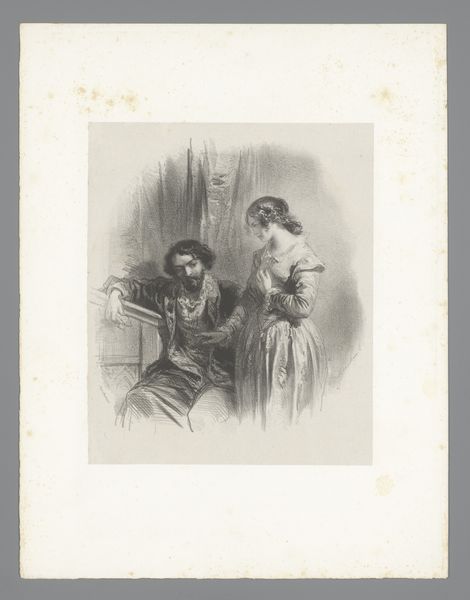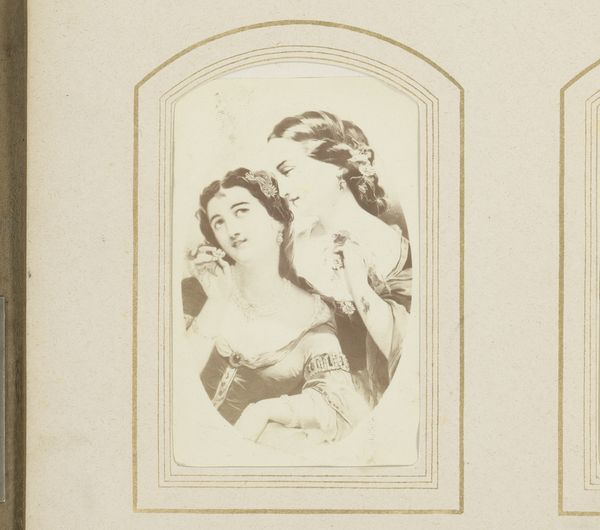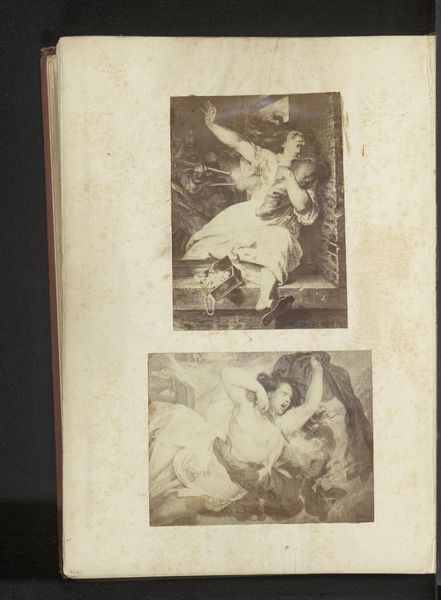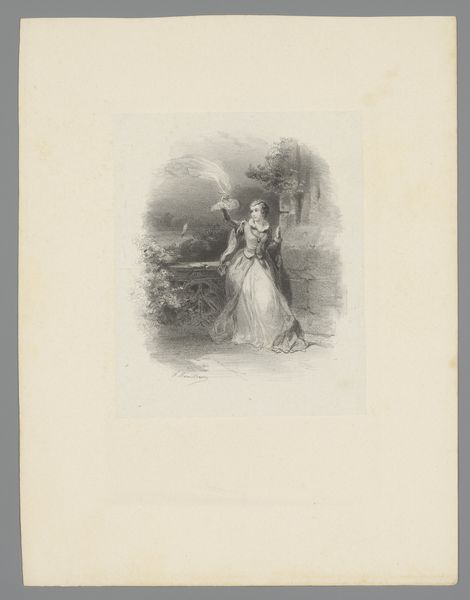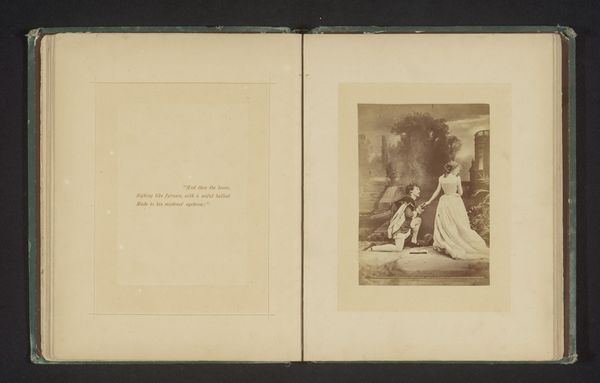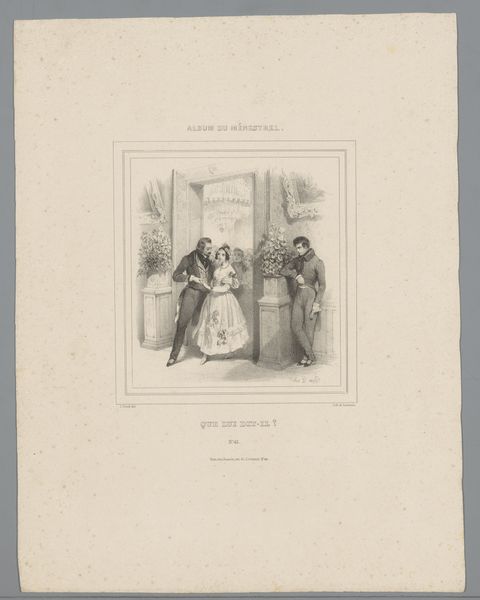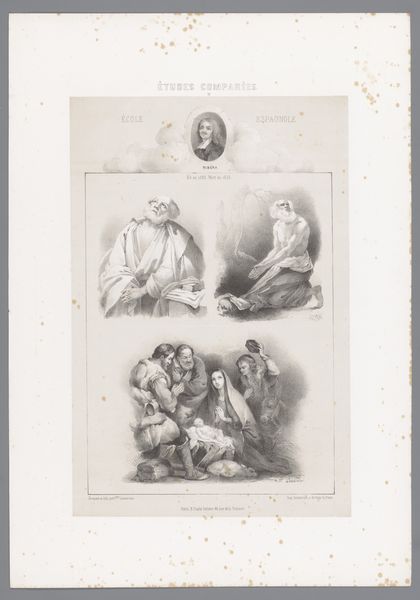
Twee panelen met representaties van januari en februari in het stadhuis te Nancy before 1896
0:00
0:00
painting, print
#
portrait
#
painting
# print
#
figuration
#
symbolism
#
history-painting
#
academic-art
Dimensions: height 298 mm, width 401 mm
Copyright: Rijks Museum: Open Domain
Curator: This artwork presents two panels, titled "Twee panelen met representaties van januari en februari in het stadhuis te Nancy," dating to before 1896. The medium appears to be a print, possibly after paintings destined for the town hall of Nancy, France. Editor: My initial reaction is to these contrasting panels. On the left, a warm domestic scene and on the right, something stark and almost theatrical in its nudity and mask-like features. Curator: Absolutely, that's an intriguing observation! January's panel showcases familial warmth, the archetypal mother embracing two children, all framed by floral motifs suggestive of growth even in winter. But what is it suggesting to the unconscious observer? Editor: A controlled image of comfort and bourgeois domesticity. There is, undeniably, an uncomfortable framing here; given it is from a city hall, it invokes ideas about idealized images of a nation in a time of empire-building, nationalism and manufactured history. Curator: Shifting to the February panel, the allegorical symbolism grows more complex. The nude female figure could signify the barrenness or coldness often associated with that month, or is this representative of masking a certain truth? I would wonder if this symbolic moment is actually presenting an archetype from folklore or pre-Christian narratives. Editor: Or even pre-modern ones; for me, that panel is a commentary on artifice itself, a moment where identity is donned and cast off at will. It has real echoes in feminist narratives around masquerade as the creation of the other or Simone de Beauvoir's ideas about "woman." It's compelling the image is one of masking; does it serve the idea of feminine deceit? Curator: An important question! The academic art style and classical allusions evident here reflect a desire for order and visual harmony. Editor: And yet, the undercurrent of tension persists; perhaps this is no harmony. By pairing them together, we aren't only looking at two moments in a calendar year, but two conflicting faces from an historical viewpoint. Curator: It highlights the inherent tension within societal ideals and the multifaceted symbols through which humans express themselves. The panels seem intended to spark exactly the types of discussions that explore culture as the ongoing and layered accumulation of ideas. Editor: Indeed. Bringing critical thinking through our experiences means that historical contexts must speak to and contend with current debates, rather than being treated as hermetic knowledge from long ago.
Comments
No comments
Be the first to comment and join the conversation on the ultimate creative platform.
